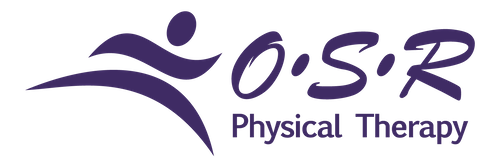
We probably all heard the saying growing up to stand up straight or sit up straight. The reasons given were often, “You look like a slouch if you don’t sit right”; or “You’ll be more productive.” Granted, there is some truth to those reasons – indeed, slouching often begets negative judgments from onlookers, and studies have shown that posture can affect emotional and mental behavior.
However, how important is good posture? Is it just a childhood demand by commanding parents, or is there something more to good posture?
What Is Good Posture?
First, we need to define exactly what “good posture” means. We often use the term posture to refer to anything from how we stand and sit, to our form during movement, to our alignment. Indeed, depending on the medical and health sciences profession and who you’re talking to, it could be referred to with as many different terms. Personal trainers and coaches might talk about posture or form, while physical therapists and chiropractors refer to alignment. Ergonomic specialists might use alignment, posture, or form. In the end, however, they all refer to one idea:
The way your body moves or stays sedentary matters to your health and functionality.
Good posture, form, movement, or alignment can mean the difference between living with pain and injury or having free mobility. Good posture means standing (or sitting) up straight with your chin parallel to the floor and shoulders even. Your core should be stabilized with your abdominal muscles and your body weight should be centered and distributed evenly on both feet. Hips and knees should also be straight, not crooked or pointing at awkward angles.
Generally speaking, many people understand posture to be how you carry your body, while form and alignment have to do with specific movements. However, it’s important to keep in mind that the terms are often used interchangeably.
Effects Of Poor Posture
Poor posture affects your body in several negative ways. From physical impediments and problems to causing or exacerbating health conditions to affecting behavior, poor posture negatively affects your overall well-being.
- Bad posture leads to poor balance. Good posture means engaging your core and distributing your weight evenly on both of your feet. Your core and distribution of weight means stabilization for your entire body, which helps you maintain your balance when standing and moving.
- Poor posture puts undue stress on your body. If you’re not distributing your weight evenly, it means you’re putting more weight on one side than the other. This is partly the reason why many people have pain on one side over the other.
- It can cause neck and back pain as well due to the compression of the spin and the lack of support from the core muscles.
What Should You Do About It
The important thing to remember is that good posture doesn’t mean stiffness. Many people end up straining their muscles, joints, and tendons as they seek to improve their posture and alignment. This could lead to more aggravation and pain, especially if you’re trying to relieve pain in an area by correcting your form. Instead, you should learn to slowly bring yourself into a better position as abrupt changes can lead to more stress. Breathing and relaxing are also important as you engage your muscles for correct form.
Furthermore, you should focus on your alignment when you move more than when you’re sitting still. Improper alignment during movement, especially physical activity, can lead to injury and lifelong pain if not addressed. Your static posture is not nearly as important as proper movement as you should be moving more than staying still.
However, it’s even more important to seek a trained set of eyes that can guide you through the process. Especially if you’re trying to relieve pain or manage a health condition by changing your posture, you’ll want an expert who can ensure you’re retraining your body correctly and at the right speed. A physical therapist is one such person who focuses on total body alignment to help fix pain issues and manage medical conditions. They will be able to help you adjust to proper positioning and give you exercises that will help you achieve better posture, form, and alignment without putting you in more pain and strain.
